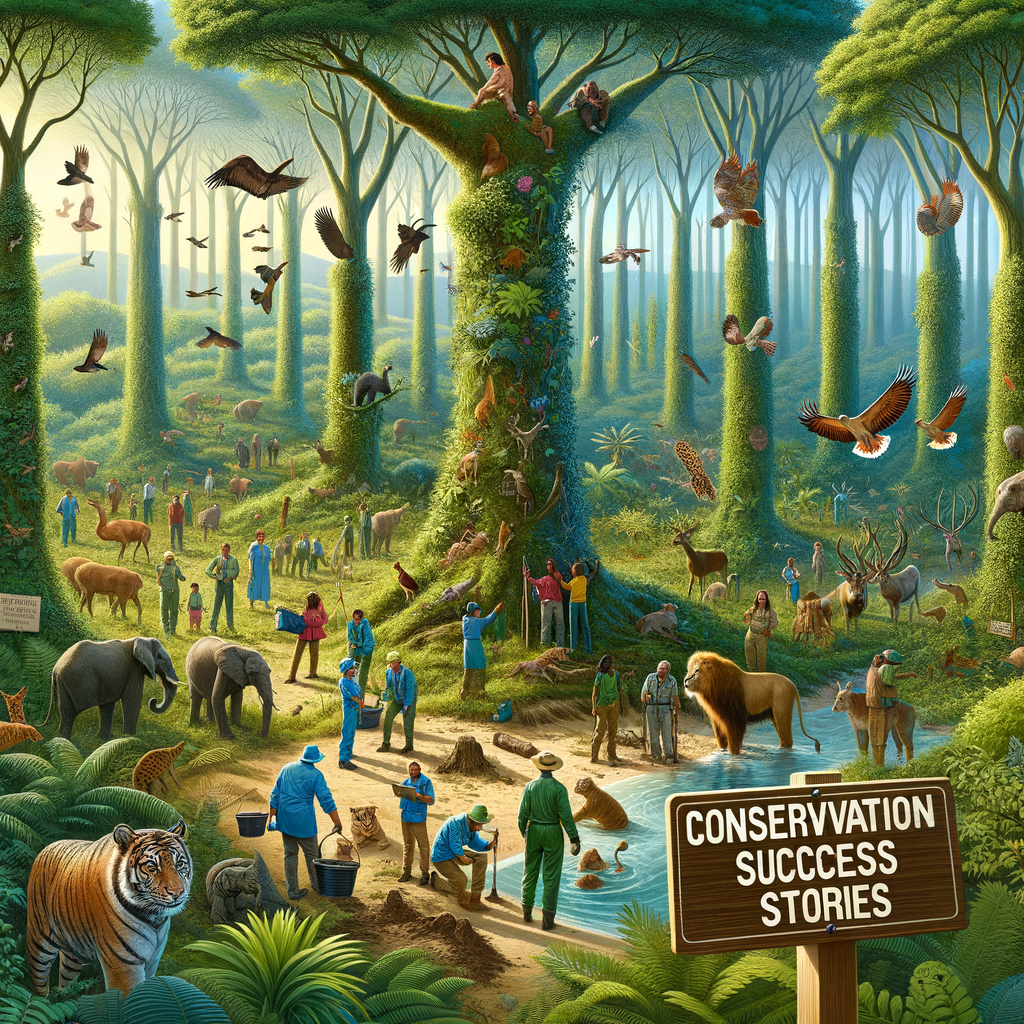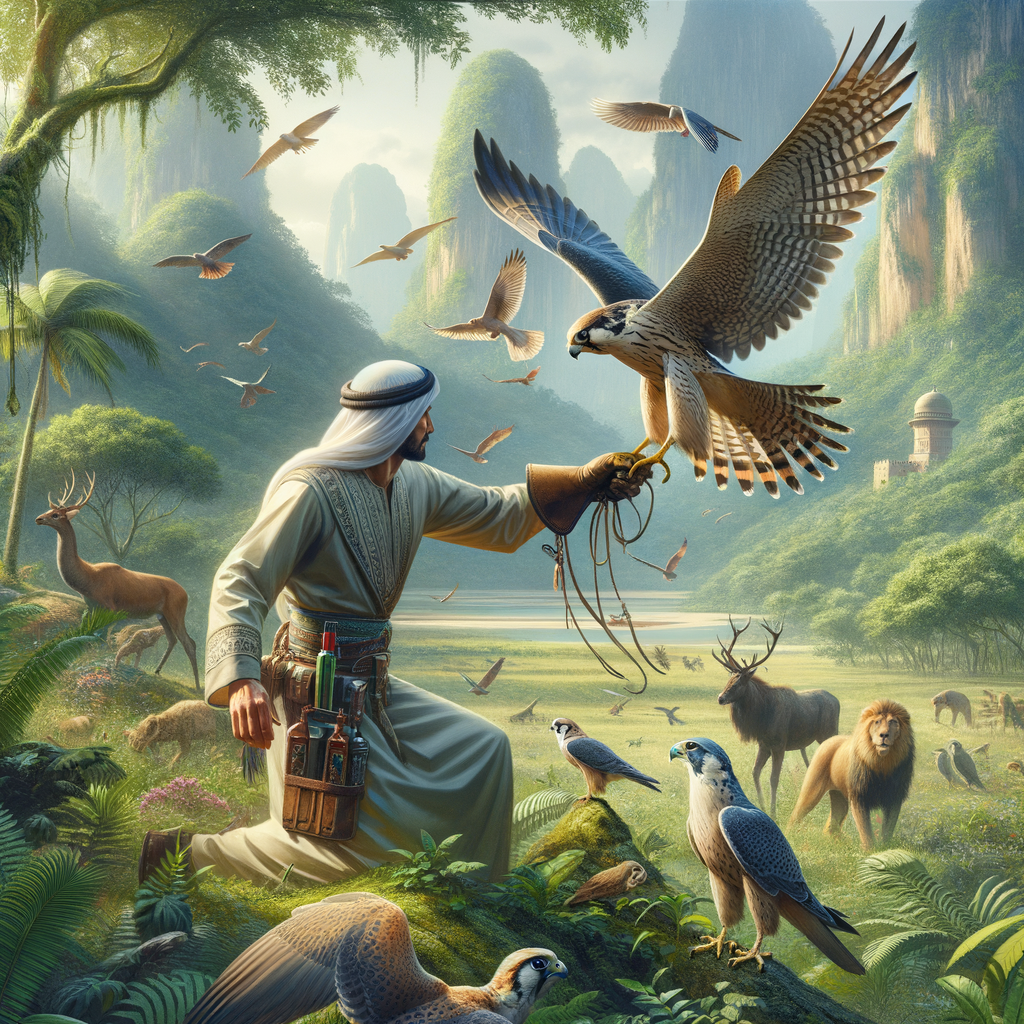Conservation Success Stories in Falconry
- Learn Falconry has made significant contributions to conserving birds of prey.
- Successful reintroduction of endangered species into the wild.
- Collaboration with wildlife organizations to protect habitats.
- Dedicated to education and raising public awareness about falcon conservation.
- Rehabilitation programs for injured or orphaned birds of prey.
- Research initiatives to better understand bird behavior and ecology.
- Encouraging sustainable and ethical falconry practices for future generations.
- Hands-on workshops to teach falconry skills while emphasizing conservation.
These efforts reflect Learn Falconry’s commitment to preserving our natural world and ensuring a thriving future for falcons and other birds of prey.
Inspiring Conservation Success Stories: The Magic of Saving Wildlife
Imagine you’re wandering through the rolling green hills of Ireland, where ancient legends and mystical creatures dance in the tales of old. Just as the Irish have a deep respect for their rich folklore and the magic woven into their landscapes, we at Learn Falconry hold a profound reverence for the natural world and all its inhabitants. This article will take you on an enchanting journey through some incredible conservation success stories, highlighting the importance of preserving our precious wildlife.
At Learn Falconry, we are passionate about the art of falconry and the vital role it plays in wildlife conservation. Much like the mythical heroes who protect their realms, dedicated conservationists around the world are championing the cause of endangered species and restoring their natural habitats. These heroes’ stories are not only inspiring but also crucial in understanding the impact we can make when we work together for a common cause.
So, if you’ve ever wondered how a simple act of dedication can turn the tide for endangered species, or how our collective efforts can bring about a world teeming with life and vitality, keep reading. You’ll discover tales as fascinating as any Irish legend, and who knows? You might find yourself inspired to become a modern-day guardian of our planet.
Inspiring Conservation Success Stories Stemming from Falconry
Many people are surprised to discover the incredible impact that falconry has on conservation. Over the years, several conservation success stories have highlighted the significant role falconry plays in protecting and restoring endangered bird species. At Learn Falconry, we celebrate these stories as they exemplify the success of dedicated conservation efforts and the positive influence of falconry.
Impact of Falconry on Conservation Achievements
Falconry, an ancient practice that dates back thousands of years, has evolved into an essential tool for wildlife conservation. One of the greatest conservation achievements in recent history is the remarkable recovery of peregrine falcons. Once listed as endangered due to pesticide poisoning, captive breeding programs led by falconers have been pivotal in reintroducing these majestic birds into the wild. Today, thanks to these efforts, peregrine falcons have made a significant comeback, showcasing a successful conservation practice that can be attributed to the skills and dedication of falconers. To learn more about the fascinating history of falconry, visit here.
Successful Conservation Efforts and Falconry
The role of falconers in conservation goes beyond breeding programs. Falconers actively participate in habitat restoration, which is crucial for ensuring the survival of various bird species. By using falconry techniques, falconers help manage and maintain healthy ecosystems where birds can thrive. This hands-on approach not only benefits the birds themselves but also supports biodiversity overall. Discover the different species of falcons that have benefited from these efforts.
Another lesser-known but highly impactful aspect of falconry is its use in wildlife management. For instance, falconers have worked with airports to control bird populations, reducing the risk of bird strikes and promoting safer skies for both birds and airplanes. This practice not only protects the lives of birds but also ensures public safety, showcasing another example of falconry’s positive impact on conservation.
Falconry Techniques and Conservation
The techniques used in falconry, such as training and breeding, are essential for successful conservation programs. Advanced falconry techniques have been refined over centuries and are employed to ensure the well-being of birds, both in the wild and in captivity. Falconers utilize various training methods to prepare birds for reintroduction to their natural habitats. These methods help birds develop crucial survival skills, which contribute significantly to their long-term success in the wild. For more information on falconry techniques, you can explore our comprehensive guide here.
Additionally, falconry equipment plays a vital role in conservation efforts. Tools and technologies such as GPS trackers and telemetry equipment have revolutionized how falconers monitor and protect birds. These innovations allow for real-time tracking and data collection, providing valuable insights into bird behavior and health. Curious about the types of equipment used in falconry? Look into our detailed sections on falconry equipment.
Moreover, understanding the legal aspects of falconry is crucial for those involved in conservation. Laws and regulations ensure that falconry practices are conducted ethically and sustainably, safeguarding both the birds and their habitats. Falcons’ legal status and conservation-related laws can be explored in depth here.
The Broader Impact of Falconry on Bird Conservation
Falconry is not just about training and hunting with birds of prey; it is a deep and respected tradition that emphasizes the conservation of these magnificent animals. Through educational programs and public outreach, falconers raise awareness about the importance of conserving birds of prey and their habitats. By sharing their knowledge and passion, falconers inspire future generations to care for and protect our natural world. If you’re interested in learning more about falconry and its contributions to conservation, check out our resources here.
These conservation success stories remind us that with dedication, knowledge, and the right techniques, it is possible to reverse the decline of endangered species and restore balance to our ecosystems. Falconry, steeped in history and tradition, continues to be a beacon of hope for bird conservation today.
Fascinating Success Stories in Conservation
Water Conservation Achievements
- Investment in Rebates and Programs: In a recent year, $46 million was provided to help save water in homes and businesses.
- Applications Processed: Over 31,350 applications helped distribute $16.6 million in regional rebate funding.
- Water Saved: These efforts saved an impressive 1,083,000 acre-feet of water during the fiscal year 2022/23.
Impact on Biodiversity
- Invasive Species Management: A comprehensive scientific study found that managing invasive species can save hundreds of species from extinction.
- Positive Actions: The study emphasized how eradication and control efforts have the most significant positive effects on biodiversity.
Conservation Efforts and Governance
- Global Governance Approach: An international team created an inventory system for tracking conservation areas, revealing more diverse ranges in places like the Amazon Rainforest.
- Biodiversity Targets: The goal is to conserve 30% of the Earth’s oceans, lands, and freshwaters by 2030, requiring a deep understanding of current conservation efforts.
State-Level Conservation Insights
- Innovative Solutions: States are setting ambitious conservation targets. For instance, California’s “30×30” initiative strives to conserve 30% of its lands and coastal waters by 2030.
- Enhanced Programs: In 2024, a new conservation enhancement act proposed more funding for programs like the National Fish Habitat Partnership and the Wetlands Conservation Act.
Falconry’s Role in Conservation
Peregrine Falcon Populations:
- Acadia National Park: Home to over 150 nesting pairs of peregrine falcons.
- Assateague Island: Slight declines in peregrine sightings possibly due to changes in weather, human presence, and development.
Impact Studies:
- USFWS Assessment: Confirmed that falconry does not harm wild populations of raptors or their prey.
- Montana FWP: Ensured that taking young peregrine falcons for falconry isn’t detrimental due to the robust population management.
Regulation Revision
- Adjustments Over Time: Falconry regulations were revised multiple times (1990, 2002, 2011) to ensure sustainable practices.
- Future Proposals: Proposed regulations for 2024-2025 aim to maintain current sustainable practices according to supportive environmental assessments.
Falconry and Biodiversity
- Cultural and Conservation Roles: Falconry not only preserves cultural heritage but also promotes healthy raptor populations and biodiversity.
- Sustaining Traditions: Efforts continue to keep falconry’s historical significance alive while enhancing its conservation impact.
Table: Conservation Investments and Savings
| Year | Investment in Water Conservation | Water Saved (acre-feet) | Applications Processed |
|---|---|---|---|
| 2022/23 | $46 million | 1,083,000 | 31,350 |
These stories and statistics shine a light on how various conservation efforts are paying off, from water saving programs and managing invasive species to the impactful role of falconry. With continued dedication and innovative solutions, these efforts can help create a more sustainable future.
Reflecting on Conservation Success Stories and Falconry’s Impact
As we look back on 2024, it’s important to celebrate the achievements in conservation and recognize the pivotal role that falconry has played in protecting and promoting biodiversity. This year has brought impressive milestones, from major advancements in water conservation to innovative strategies in managing invasive species. Conservation governance has shown remarkable progress through a comprehensive inventory approach, revealing extensive and diverse conservation areas, particularly in the Amazon.
Furthermore, the importance of effective management and increased investment in protected areas has been underscored, showcasing the substantial returns on conservation efforts. Notably, state-level initiatives such as California’s “30×30” have highlighted ambitious goals toward preserving significant amounts of land and coastal waters.
On the falconry front, we’ve seen impactful positives such as stable peregrine falcon populations and regulatory measures that ensure the practice’s sustainability and compatibility with environmental goals. With no negative impact on wild raptor populations, falconry continues to be a valuable tool for conserving our natural heritage and fostering a deep connection to wildlife.
These stories illustrate the power of dedicated conservation actions and the harmonious relationship between traditional practices like falconry and modern environmental stewardship. By investing in and supporting these efforts, we can make lifelong impacts on our planet’s health and biodiversity. Together, we are making strides toward a more sustainable and flourishing world.



